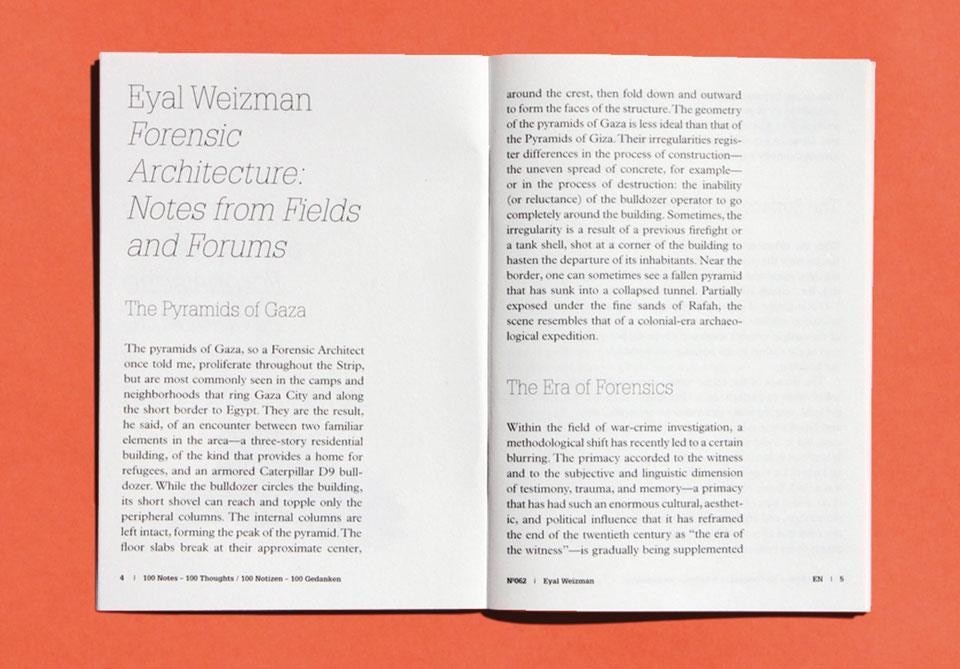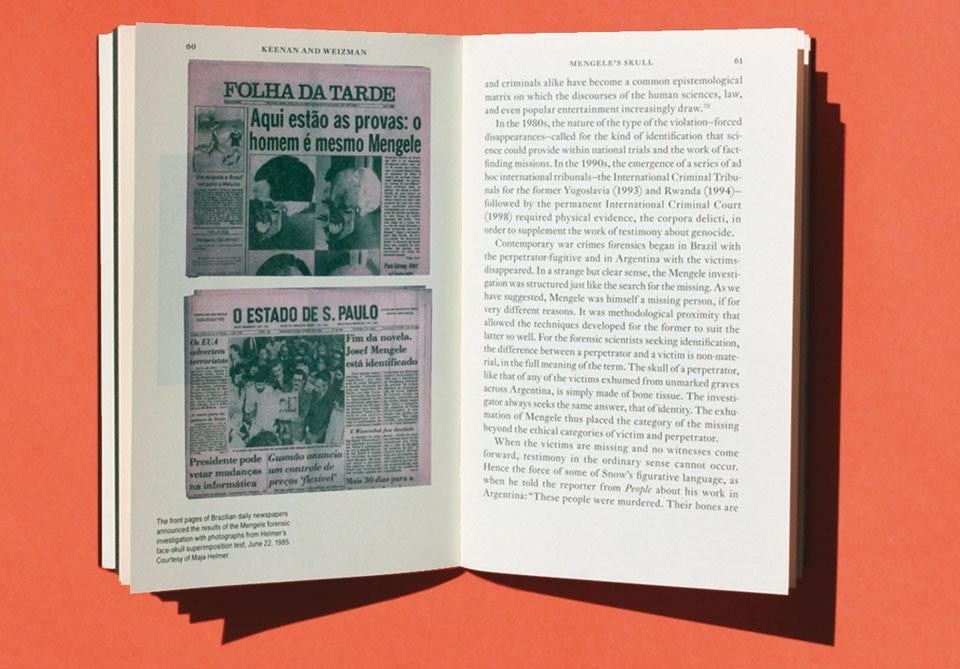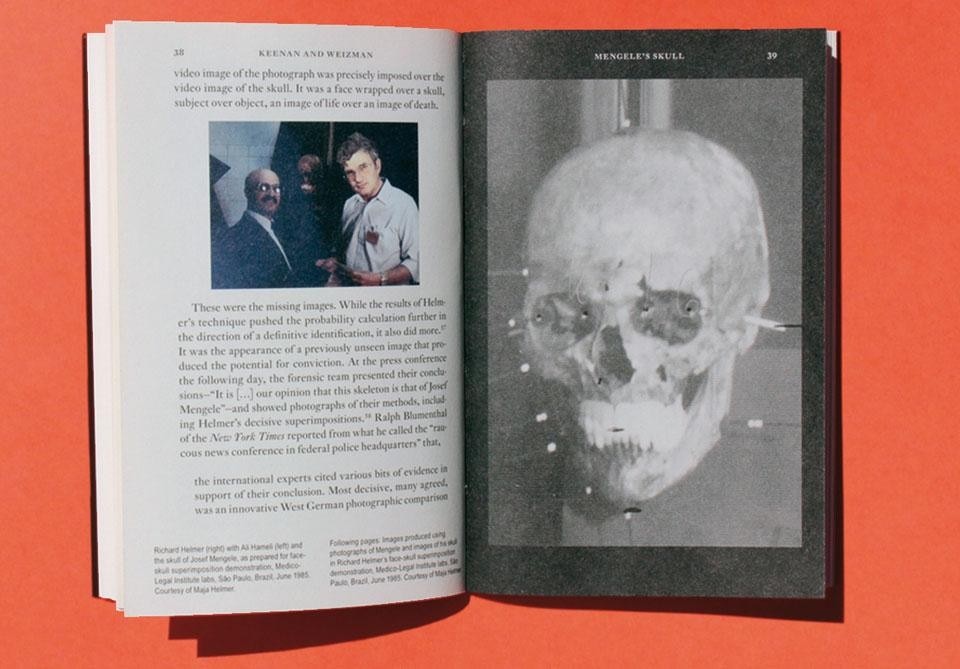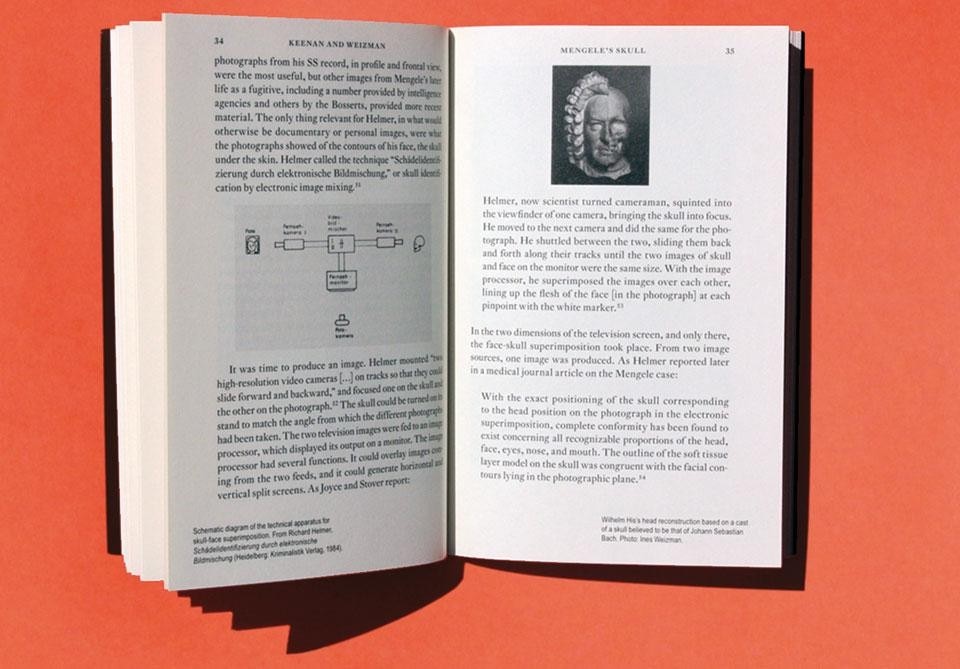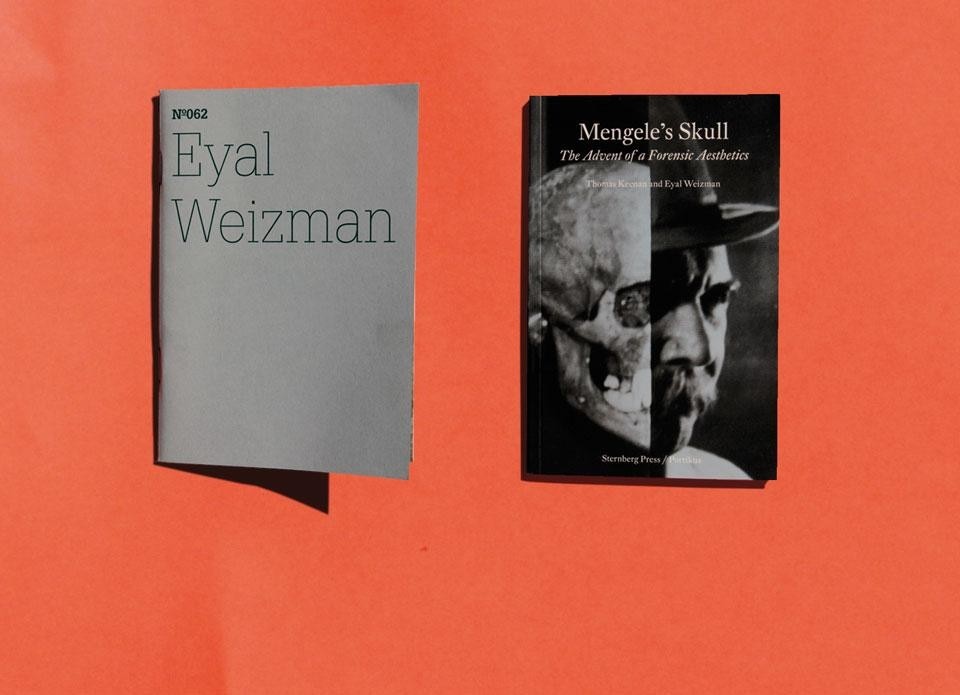Eyal Weizman, Forensic Architecture: Notes from Fields and Forums, Hatje Cantz, Ostfildern 2011. pp. 44
Mengele's Skull: The Advent of a Forensic Aesthetics, co-authored by Thomas Keenan and Eyal Weizman, focuses on the 1985 committee of experts who went down to Brazil to identify a skull as that of Nazi war criminal Josef Mengele. The book was published on the occasion of an exhibition at Portikus, Frankfurt am Main, which was part of a forum and research group headed by Weizman and run by the Centre for Research Architecture at the Department of Visual Cultures, Goldsmiths, University of London. The multidisciplinary project team included architects, artists, geographers, scientists, information designers, jurists and media scholars.
Authored by Weizman, the dOCUMENTA Notebook no. 62, Forensic Architecture: Notes from Fields and Forums further develops Weizman's previous writing on destruction strategies with his focus here not only on the Israeli attacks on Gaza, but also on Gazan homes. With the Israeli attack in late 2008-early 2009 and with the following un Fact Finding Mission on the Gaza Conflict, also known as the Goldstone Report, we see how the investigation of war crimes becomes a forensic inquiry into the mechanical parts and objects involved in the attack.
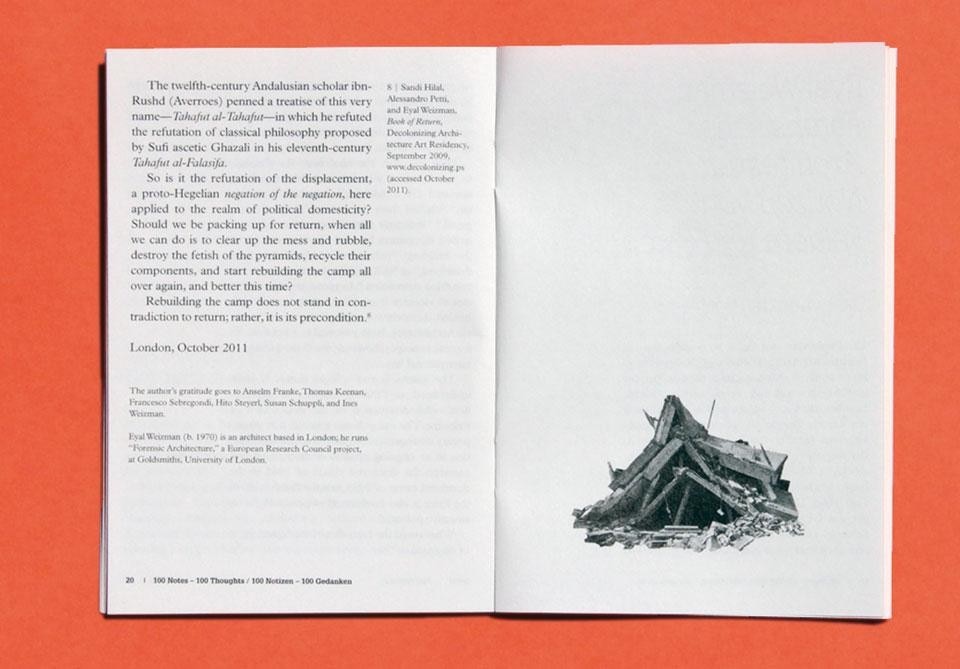
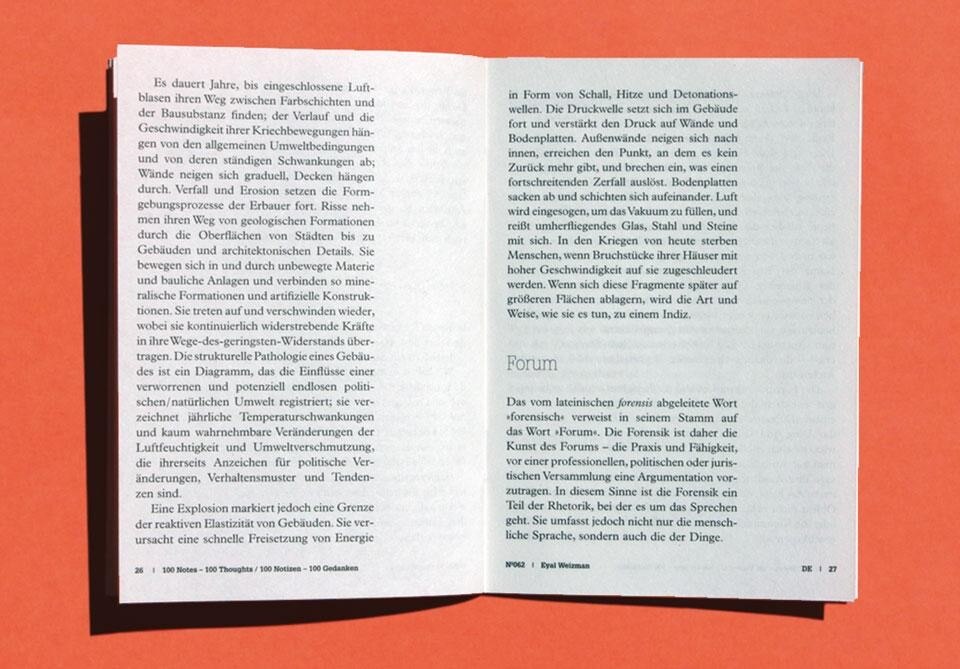
Suspicious, doubtful and critical, the conspiracy theory will always see things as merely illusions or symptoms of a system playing in the background
